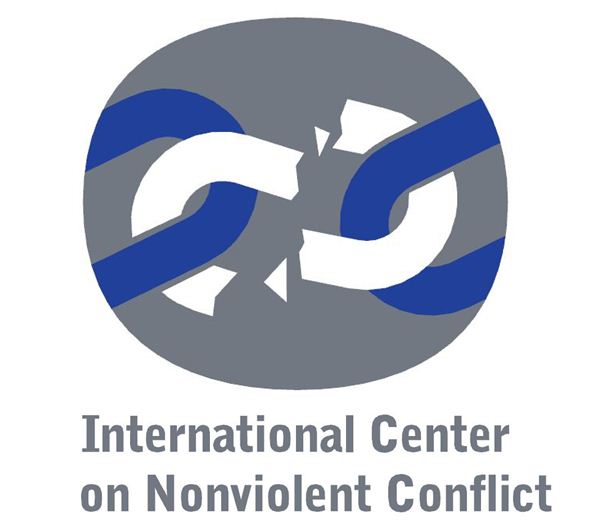India
Through detailed analysis of Gandhi's campaigns from 1915 to 1922 the author illuminates the evolution of Gandhi's thinking and strategy. Overy stresses the importance of Gandhi's constructive programme, promoting local empowerment, and its interconnectedness with resistance campaigns against imperial rule.
Covers range of environmental campaigns in different parts of the world, including Ireland, France, Israel, Japan, India and Indonesia.
Originally published in Dissent.
Raises caveats about comparisons with Gandhi, discusses Hazare’s diagnosis and prescriptions for corruption and comments on the nature of the Hazare movement. Argues against claims that it is a pawn of the extreme right RSS and/or CIA, noting the extent of mass protests and the depth of anger about corruption.
Analysis of Gandhi’s concept of satyagraha, of his political leadership and and of the 1931 Salt Satyagraha and 1947 fast, as well as covering critiques by contemporaries and making comparisons with Martin Luther King and Malcolm X.
This article explores some feminist voices from India, especially one of a Dalit feminist, and two Northeastern feminists, and identifies certain views on common issues that bind them together. It also looks into the different priorities of each of these feminists, in order to understand the contexts, cultures and experiences that have shaped their primary concerns.
Includes Roy’s 2008 essay ‘Azadi: the only thing Kashmiris want’, previously published in the Guardian (London), Outlook (New Delhi), and her 2009 book Arundhati Roy, Listening to Grasshoppers: Field Notes on Democracy, London, Hamish Hamilton, 2009 , pp. 304 .
Gill discusses the Indian farmers' protests in the context of the shift towards neo-liberal global capitalism and the power of Indian agribusiness, aided by new internet platforms and data analytics.
Building on 40 years of activism and scholarship, contributors assess recent feminist issues and campaigns in India, Pakistan, Sri Lanka and Bangladesh.
Focused particularly on the controversy over the major Narmada River dam projects, but also provides comparative perspective by considering dam projects in Brazil, China, Indonesia, South Africa and Lesotho, where the World Bank and other lenders were persuaded to withdraw funding.
The book discusses what factors encourage or undermine nonviolent discipline, including the reactions of the government and the way the movement is itself organised.
Primarily discusses the US civil rights and the British nuclear disarmament movements.
Brings together historical and contemporary approaches to nonviolent struggle and theoretical contributions as well as analyses of particular movements. Section 1 on theory includes writings by Thoreau, Tolstoy, Gandhi and Martin Luther King. Section 2 covers 'Nonviolence as a Political Strategy' and Section 3 'Nonviolence in Contemporary Movements' including a number of contributions on important recent movements in India: environmental campaigns against the Narmada dams and to preserve forests, Gandhian campaigns after Independence and the role of Jayaprakash Narayan, and the Anna Hazare Movement against corruption. A number of eminent contemporary Indian scholars have contributed.
Useful summary analysis including brief case studies of corporate misuse of water and resistance to them (and further references): Nestle in US, Vivendi and Suez in Mexico, Bechtel in Bolivia and Coca Cola in India.
Revisionary analysis of Gandhi’s 608 day campaign to secure right of untouchables to use road by a Brahmin temple, challenging claims in earlier accounts that a solution was reached because the Brahmins were ‘converted’. The author criticises both Gandhi’s belief that self-imposed suffering can convert the opponent and his leadership of this campaign.
Focuses on conflicts over urban space, resources and housing in Cambodia, India, Nepal, Pakistan and Sri Lanka, and includes accounts of resistance in squatter settlements, e.g. in Kathmandu.
Covers women’s political rights across all major regions of the world, focusing both on women’s right to vote and women’s right to run for political office. The countries explored are Afghanistan, Armenia, Australia, Bolivia, Canada, Cameroon, Chile, China, Colombia, Cuba, Czech Republic, Finland, France, Ghana, India, Indonesia, Israel, Jordan, Kenya, Kuwait, Malaysia, Mauritius, Mexico, Mongolia, Morocco, New Zealand, Myanmar, Niger, Nigeria, Poland, Russia, Rwanda, Slovenia, Sri Lanka, Sweden, South Korea, Slovenia, Switzerland, Taiwan, Tunisia, Turkey, the United States, Uganda, Uruguay, and Zimbabwe.
The author argues that Indian agricultural policy, devised in response to food shortages in the 1960s, relied on a mix of technological solutions to increase yields and a range of pricing measures to support farmers. These policies are out of date, but changing the overall policy is difficult as farmers believe their livelihoods are at stake. This paper considers the issues behind the protests and suggests ways forward.
This book was published soon after December 1997, when over 120 states (excluding the USA, Russia, China, India and Pakistan) signed the Ottawa Convention to ban production, stockpiling and use of anti-personnel mines. It provides a wide ranging survey of both the global campaign and the diplomatic moves culminating in the 'Ottawa process', which, under Canadian government leadership, resulted in the treaty. There are contributions from leading campaigners, diplomats and academics.
Merton explains his theoretical approach, which draws on exponents of nonviolence such as Gandhi and Martin Luther King Jr, and in this context discusses the Danish people's resistance against the Nazis, the perils of the nuclear age and racism.
Foreword by Elise Boulding. Examines how the Gandhian movement in India developed Gandhi’s idea that nonviolent volunteers should act in place of armed police (for example to quell riots) and provide a nonviolent alternative to the army. Includes substantial bibliography pp. 267-84.

 The online version of Vol. 1 of the bibliography was made possible due to the generous support of the
The online version of Vol. 1 of the bibliography was made possible due to the generous support of the  The online version of Vol. 2 of the bibliography was made possible due to the generous support of
The online version of Vol. 2 of the bibliography was made possible due to the generous support of